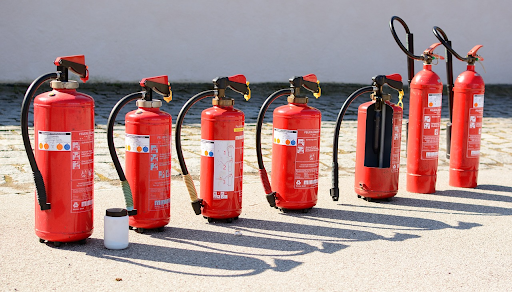Ensuring the safety of a building and its occupants is of paramount importance, especially when it comes to protecting against the threat of fire. By Implementing fireproofing measures, you can significantly reduce the risk of fire-related incidents and minimize potential damage to the building.
Here are some essential steps you can take to make your building more fireproof and enhance overall safety.
Incorporate Fire-Resistant Materials
Incorporate fire-resistant materials into the construction or renovation of your building. Opt for fire-rated doors, windows, and partitions that can withstand high temperatures and prevent the spread of flames.
Utilize fire-resistant building materials such as gypsum board, fire-rated insulation, and concrete. These materials can delay the spread of fire and provide valuable time for evacuation and firefighting efforts. You need an annual fire safety statement to ensure that your building is up to code and adheres to current fire safety standards.
Install Smoke Alarms
The first line of defense against fires is early detection. Install smoke alarms throughout your building, particularly in key areas such as bedrooms, living rooms, and hallways. Regularly test and maintain these alarms to ensure they are always functional. Additionally, consider installing a comprehensive fire detection system that includes heat sensors, flame detectors, and manual pull stations.
These systems can alert occupants and emergency services promptly, allowing for swift response and evacuation if necessary.
Maintain Fire Extinguishers
It is important to place strategically located fire extinguishers throughout your building, ensuring they are easily accessible and properly maintained. Regularly inspect and service extinguishers to guarantee they are in good working condition. Train occupants on the correct usage of fire extinguishers and emphasize the importance of quick action when faced with small fires.
Remember to follow local fire safety regulations and consider the specific hazards present in your building to determine the appropriate number of extinguishers needed.
Create Evacuation Routes
Develop a well-defined evacuation plan for your building. Mark escape routes with illuminated signs and ensure they are always unobstructed. Display evacuation diagrams on each floor, highlighting the nearest exits, assembly points, and emergency contact information.
Conduct regular fire drills to familiarize occupants with evacuation procedures and promote a quick and orderly response in the event of a fire. Make sure to regularly review and update the evacuation plan based on changes in the building’s layout.
Maintain Electrical Systems
Electrical malfunctions are a common cause of fires. Regular maintenance and inspection of the electrical systems in your building are important steps to minimize the risk of electrical fires. It is best to hire certified professionals to conduct routine checks, ensuring that wiring, circuits, and electrical equipment are in proper working order.
Ask occupants to report any electrical issues promptly, such as flickering lights, overheating outlets, or burning smells, so that these issues can be addressed immediately.
Educate and Train Occupants
Education and training play a vital role in fire safety. You can conduct regular fire safety awareness programs for building occupants, emphasizing the importance of fire prevention, proper use of equipment, and evacuation procedures.
Provide training to your employees on how to respond to different fire scenarios, including techniques for using fire extinguishers and staying calm during an emergency. It is important to encourage occupants to report any potential fire hazards.









